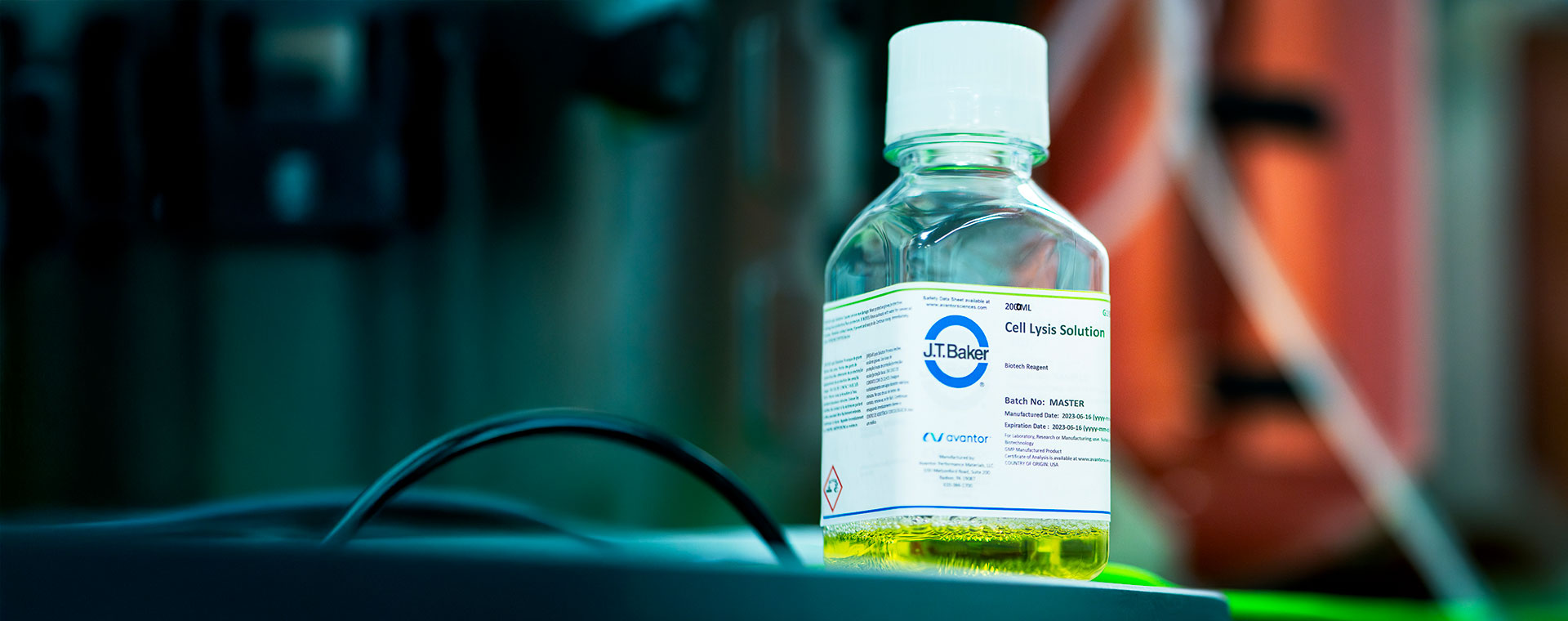
Designing Innovative, Sustainable Downstream Bioprocessing Solutions
Behind the Innovation with Jungmin Oh, Senior Manager for New Product Development

Jungmin Oh, Senior Manager for New Product Development
Jungmin was the technical lead for the team challenged with developing an eco-friendly alternative to a leading bioprocessing detergent. She works at Avantor’s Bridgewater, NJ Innovation Center.
What started as a straightforward mandate to Avantor’s Bridgewater Innovation Center scientists – to find an eco-friendly alternative to a leading bioprocessing detergent – transformed into a challenge to bring improved efficiencies and cost savings to customers during downstream bioprocessing for both gene and monoclonal antibody (mAb) therapies.
Searching for a More Eco-friendly Detergent for Bioprocessing
In 2012, the European Union’s European Chemicals Agency identified Triton™ X-100, a common chemical widely used in biomanufacturing processes, as a "substance of very high concern" due to its toxicity to aquatic life when entering the environment through waste systems. As a result, one of Avantor’s biopharma customers asked to partner with the company to develop a replacement for Triton X-100 (also known under the generic name octylphenol ethoxylate) for viral inactivation in mAb production.
Viral inactivation is significant for monoclonal antibody therapeutics because potential viral contamination presents a substantial risk to patients. With over 100 approved mAb therapies on the market and many more under development, finding a comparable replacement for Triton X-100 for viral inactivation was crucial. Scientists at the Bridgewater Innovation Center quickly set to work to identify a suitable replacement.
At the same time, Avantor’s Bridgewater scientists recognized that Triton X-100 had a significant use case in the cell lysis stage of adeno-associated virus (AAV) gene therapy manufacturing, and they started developing a separate solution for that application. In gene therapy, scientists produce viral vectors – or the active therapeutic agent – inside host cells. To be used, they need to be released, undamaged, from these host cells, which is where cell lysing agents come into play.
Addressing Additional Productivity and Efficiency Challenges of Triton X-100
After identifying potential Triton X-100 replacements in these two downstream bioprocessing steps, Avantor researchers sought trusted biopharma customers to pilot and test the alternatives and provide feedback on their experiences with Triton X-100.
These customers shared three key challenges when working with Triton X-100 in bioprocessing:
- The pure form of Triton X-100 is highly viscous, making it challenging to work with.
- The foaming profile of Triton X-100 is such that manufacturers can’t fully use bioreactor space without risking overflow.
- Triton X-100 does not protect viral particles against shear stress, a common problem during cell lysis that reduces yield.
On top of its ecotoxicity potential, Triton X-100 is thick and viscous, like cold honey – messy and very difficult to work with. “We knew that was a pain point for the customer,” Jungmin Oh, senior manager for new product development at the Bridgewater facility, explained. “First, you must mix this thick solution, pump it out, dilute it to a stock solution, mix to make a homogeneous solution and filter it again. Only then is it ready to be added to the cell lysis or viral inactivation process.”
Oh was involved in every step of the process, from identifying an alternate detergent, testing its performance, and developing the purification process and final product specifications for both final Avantor products – J.T.Baker® Cell Lysis Solution and J.T.Baker Viral Inactivation Solution.
Avantor developed premixed, pre-diluted solutions –with a viscosity just a little bit higher than water – reducing time and risk from bioprocessing steps associated with Triton X-100 such as prep work, batch preparation, documentation, and review, in-process testing and filtration.
Avantor’s Bridgewater scientists also engineered the J.T.Baker Cell Lysis Solution to be lower foaming than Triton X-100, saving time and optimizing bioreactor space
“When you use detergents at home, they create a lot of foam,” Oh explained. “In bioprocessing, you don't want that foam on top of your product because that wastes valuable bioreactor space. Also, it's a risk to process control. You don't want the foam to overflow from your reactor.”
Finally, Avantor’s formulation also better protects AAV particles against shear stress, delivering higher yield potential than Triton X-100.“ In bioprocessing, AAV particles are very fragile. They don't like the sheer stress during the cell lysis phase, even the stirring in the bioreactor,” Oh noted. “So, we formulated J.T.Baker Cell Lysis Solution to help protect viral vector particles and minimize shear stress.”
Delivering Value to the Biopharma Industry
In addition to building close working relationships with customers, the Bridgewater site worked cross-functionally to deliver these solutions, Oh explained. “We work with the chemistry, product development, upstream, and analytical teams to bring these solutions and others to fruition for the biopharma industry.”
Solving an urgent, industry-wide sustainability challenge while building viable solutions to our biopharma customer needs was gratifying and fulfilling for the Avantor team. “We set out to develop a bioprocessing detergent that showed comparable efficacy to Triton X-100 without its potential downstream eco-toxic effects,” Oh said. “We ultimately brought to the market two solutions that simplify key downstream viral vector and mAb manufacturing steps – giving valuable time back to our customers to focus on science and innovation.”
Learn more about J.T. Baker Cell Lysis Solution and Viral Inactivation Solution, and explore our commitment to advancing sustainability from discovery to commercialization.



